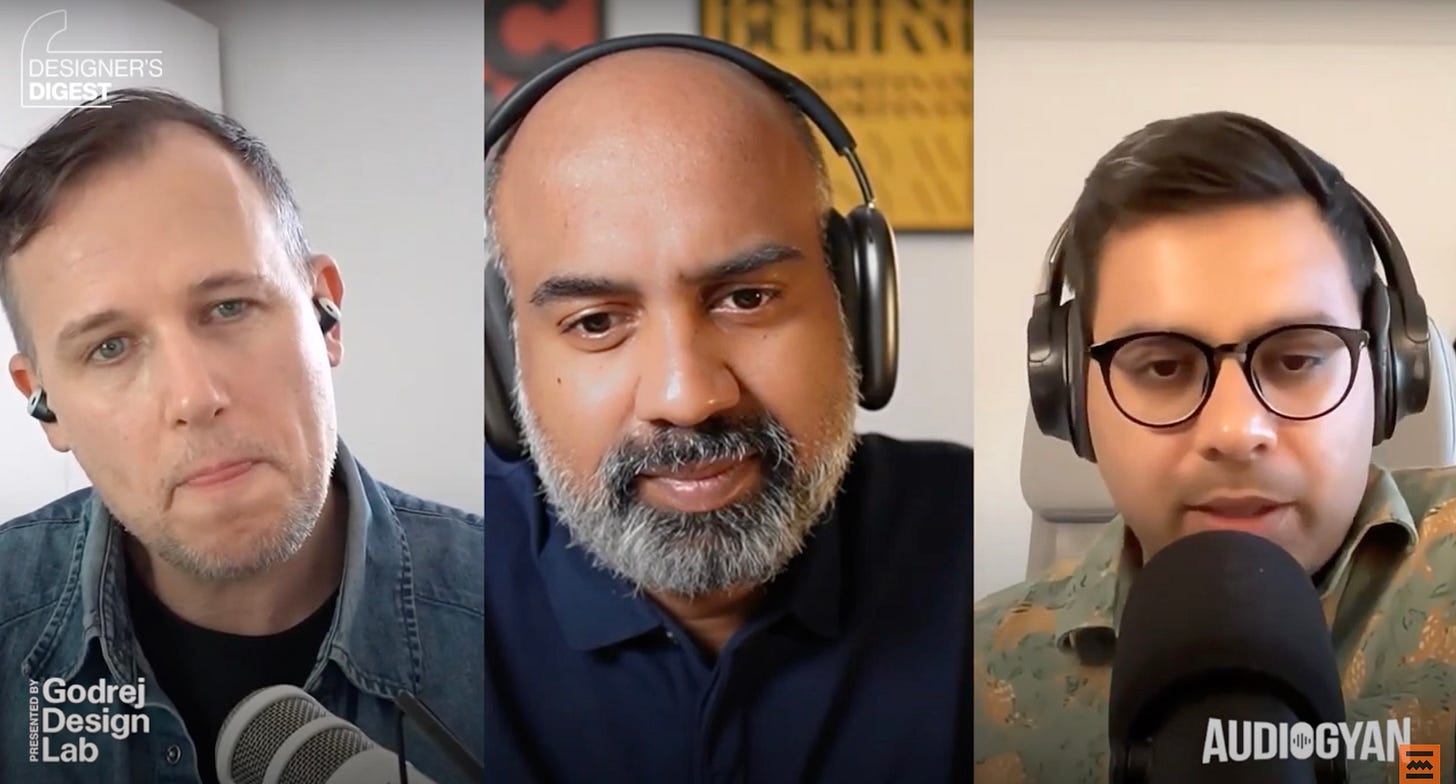A three-legged stool that holds digital products together, with Daniel Burka
Can Engineering, Design and Product teams co-work? Why is specialisation a dangerous trend in Design? How challenging is public healthcare in India? Who owns UX?
In today’s fast-evolving tech landscape, building successful products requires more than just brilliant ideas or slick interfaces. It’s about finding a balance between business goals, technical feasibility, and the real needs of users. In this candid conversation ( ▶️ Ep. 298 ), Daniel Burka unpacks the “three-legged stool”. Through real-world examples from his work in global healthcare, Daniel explores why healthy tension among product, design, and engineering isn’t just inevitable but essential.

Daniel Burka is Director of Product and Design at Resolve to Save Lives (RTSL), leading the ‘Simple’ platform for millions of patients in India, Bangladesh, and Ethiopia. He founded the Open Source Health Icons project and sits on the board of Laboratoria. Daniel’s background spans Google Ventures and multiple startups. He’s known for blending design and product management to solve real-world problems. Joined in this conversation is Shreays Satish, founder of Ownpath.com.
This episode is part of a 10-part special series called Designer’s Digest, done in association with Godrej Design Lab. It explores design as a profession—its daily grind, career growth, industry realities, and the skills required to thrive in an ever-evolving landscape.
1️⃣ Is the 'tension' between product, design, and engineering teams beneficial?
Short Answer: ‘Tension’ is a necessary evil.
Long Answer: Tension among product managers, engineers, and designers is crucial for building exceptional products. Product managers often prioritize short-term business metrics, which, if unchecked, can compromise long-term success. Engineers focus on technical performance. While designers champion the user experience, often with a more qualitative and long-term view. This inherent tension forces a balanced perspective, preventing any single focus from dominating and leading to suboptimal outcomes. It ensures decisions are robust, considering performance, business goals, and customer satisfaction holistically. This safeguards the product's future viability and UX.
2️⃣ What is your take on Specialist vs Generalist debate?
Short Answer: A Jack of all trades is better.
Long Answer: I honestly think that specialization is a dangerous trend in design. Even at big companies, I advocate for fairly generalist designers who can do copywriting, do at least some basic user research, design icons when needed, or work with illustration teams. Designers keep throwing around the word unicorn dismissively when hiring, but I think it's extremely valuable for designers to have a fairly broad toolkit. Specialists pigeonhole themselves into a very minor part of the design process. For larger influence and true effectiveness, you need broader knowledge.
The other side of the debate - Jordan Peterson
3️⃣ What is the key to efficient design in public healthcare?
Short Answer: 14-second interactions.
Long Answer: While interacting with public healthcare workers in India, 9 out of 10 suggested, “Don’t make my life harder.” To put that into perspective, healthcare workers in India get an average of 3-4 minutes per patient as they attend 150-200 patients daily. So our KPI while designing ‘Simple’ was to reduce the data entry time to 14 seconds per interaction. Scanning, entering blood pressure, updating medicines, and scheduling follow-up, all of it in 14 sec. This helped us scale. The system now manages 4.5 million+ hypertension/diabetes patients across India, Bangladesh, and Ethiopia by eliminating unnecessary complexity.
Peek into Design thought behind ‘Simple’ platform. Is it design, engineering, or the Product Manager’s thought? Let me know in the comments. 👇
4️⃣ Who owns the user experience in an organization?
Short Answer: Everyone should.
Long Answer : It's not about who owns the user experience. I think that's a really poor way of looking at it. It's really about how do we get everyone in our organization to care about user experience. Take Netflix's buffering spinner. Designers didn't decide to put that logo over the screen when internet is unstable. An engineer decided that, and it's fundamentally user experience. Engineers probably just added an if statement for when to show buffering without designer input. But it's a really important part of Netflix user experience. If designers want to be successful at crafting user experience, we need to get everyone caring about it, not fighting over ownership.
“The number one responsibility of UX leaders is to make their organization the world’s foremost experts on their users and what their users need.” : Jared Spool
Daniel Burka’s insights remind us that the best products emerge from collaboration, not silos. The interplay ‘tension’ between design, engineering, and product management leads to more thoughtful and resilient solutions. Daniel’s work in public health technology shows how listening to users, prioritizing simplicity, and embracing generalist skills can drive impact at scale.
If you are interested in the full conversation 👉 Youtube | Spotify | Substack | ApplePodcast



